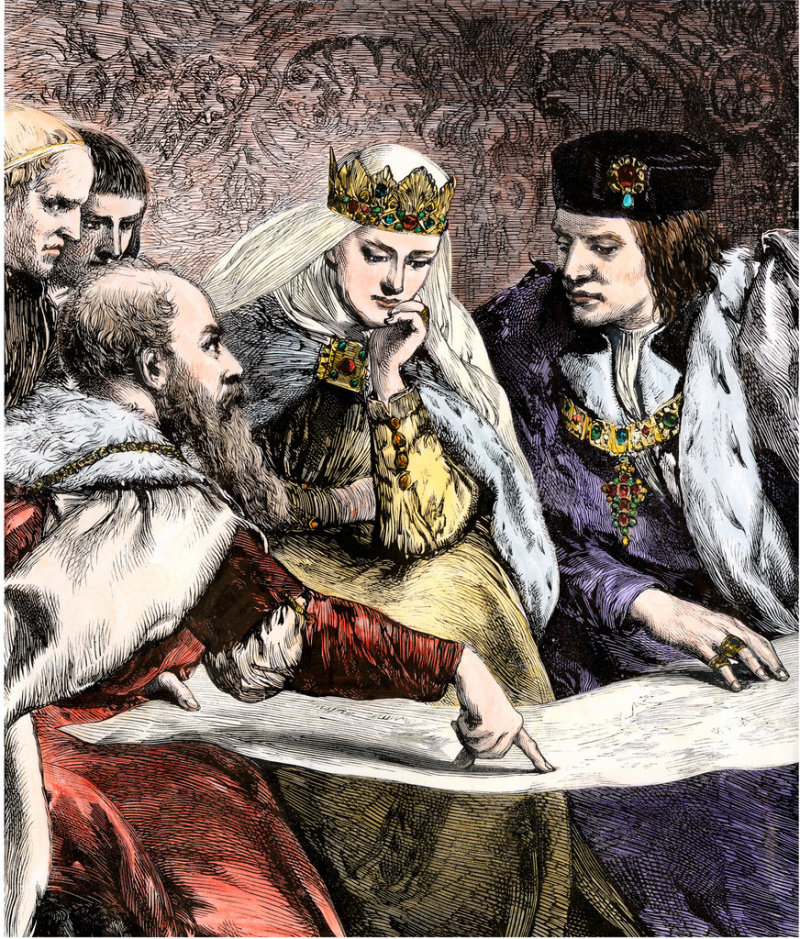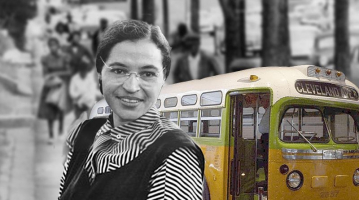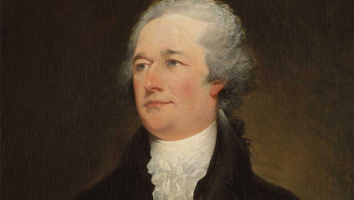Top 8 Interesting Facts about Isabella I of Castile
One of the most powerful queens in human history is known as Isabella I of Castile. Her 30-year reign was distinguished by numerous outstanding ... read more...accomplishments, like the unification of Spain, a decline in crime, and the discovery of the New World. The life narrative of Queen Isabella I, a significant and well-known person in Spanish history, is an engaging read. Here are some interesting facts about Isabella I of Castile for anyone learning Spanish or wanting to increase their understanding of the language!
-
The first offspring of King John's second marriage was Isabella. Her older half-brother Henry, the child of John II and his first marriage, was the heir to the throne. The royal family's marriage was sanctified once more in 1453. A son named Alfonso was born to the Queen.
The lives of King John II's successor, Isabella, and his brother underwent alteration. Henry was crowned king. Even though he didn't get along with his half-siblings, he made sure they had a good education. He dispatched Isabella to Segovia, where she lived in relative ease and comfort.
In 1468, when Isabella's brother Alfonso passed away, everything changed. He designated Isabella as his heir apparent in his will. When she was 13 years old, she was taken to court so that the king could watch over her. Alfonso was the focal point of Henry IV's opposition initially, but after his death in July 1468, the rebellious magnates inevitably turned to Isabella. The noblemen who wanted to seize power in the first place saw this as a great chance. They requested Isabella take the helm of the already formulated revolt.
Isabella decided to handle their conflict on her own. She got together with Henry to talk about the issues and work out a compromise. They agreed that Henry would name her as his successor. Isabella committed to only getting married to someone her brother would approve of.

Photo: https://www.britannica.com/ 
Photo: https://www.nationalgeographic.com/ -
When Isabella was just six years old, the marriage between her and Aragon was planned. But their union happened a long time afterward. The understanding between Henry and Isabella suggested that Isabella would not be forced into a marriage. She was not meant to be compelled to wed someone Henry didn't like.
In actuality, Henry broke his word. In the final years of his rule, he was quickly losing influence. To strengthen his position, he required fresh allies. He made numerous attempts to plan his sister's wedding. Each country put out a marriage candidate: Portugal, Aragon, and France. It appears that Henry intended Afonso V, king of Portugal, and his half-sister to wed. The potential political advantages of their marriage were his first focus.
Henry ignored Isabella's reassurances that he had kept his pledge to her. Finally, she decided to secretly wed Ferdinand, the man she had known since she was a young child. They had several issues because they were second cousins. She had to get the Pope to give him a dispensation before she could legally wed Ferdinand. The couple later wed in secrecy in 1469, uniting Eastern and Western Spain and making it a strong force in Europe.

Photo: https://sites.psu.edu/ 
Photo: https://en.wikipedia.org/ -
Isabella was a strong ruler and a great diplomat, which is one of the most interesting facts about Isabella I of Castile. In 1474, Isabella was recognized as the legitimate monarch of Castile and León. Her reign's early years were not quite easy. Isabella was in Segovia when Henry passed away, which was reserved for her claim. Cardinal Pedro González de Mendoza, the constable of Castile (a Velasco), and the admiral (an Enriquez), a member of Ferdinand's mother's family, were among the notable Castilian nobility who supported her. The strong young marqués de Villena, the master of Calatrava (an influential military order), and the archbishop of Toledo made up the opposing group, which advanced Joan's counterclaims. Afonso V of Portugal, who hurried to conquer Castile and there got engaged to Joan, helped them.
The Battle of Toro was the longest and bloodiest of the several wars that ensued. The Battle was the first and one of Isabella's most significant political victories. King Alfonso V's army was routed and left Castile after its loss. Segovia's insurrection was suppressed by Isabella in August of 1476. An intriguing aspect about Isabella I of Castile is that she went to talk with the rebels herself.
Photo: https://en.wikipedia.org/ 
Photo: https://www.nytimes.com/ -
The Reconquista, the protracted period of the Iberian Peninsula invasion, came to an end with the capture of Granada in 1492. Although Spain did eventually become a united nation, it took a very long time for this personal union to result in actual political unification. Ferdinand named Isabella as his heir in Aragon in his first testament (written in 1475), and he freely acknowledged the benefits the union with Castile would bring to his subjects. However, each kingdom's administration persisted in following its institutions. The two kings had a common goal: to conquer Granada, the last Muslim bastion in Spain, and put an end to the protracted Reconquista process.
In the end, however, the conquest (which started in 1482) was challenging and protracted, which put a burden on Castile's finances. The campaign had certain medieval elements, such as the battle order, but it also had some innovative ones. Isabella took a keen interest in how the war was being fought, and she appears to have been behind the development of a military hospital and better supply routes. Isabella and Ferdinand established an advanced headquarters in Santa Fe in 1491, near to their ultimate goal, and they remained there until the fall of Granada on January 2, 1492.

Photo: https://www.historynet.com/ 
Photo: https://www.thecollector.com/ -
Columbus met the queen in Santa Fe to solicit assistance for the expedition that would lead to the settling of America by Europeans, so another event that the queen would come to be personally identified with was taking place while she was there. Isabella and her councilors deserve credit for the choice they made to sanction the historic voyage, even though they claim that she offered to donate her jewels to help finance the mission cannot be believed because Columbus only received a little amount of financial support from her.
On April 17, 1492, the conditions under which the expedition was to set out to find a new path to the Indies were drafted. On August 3, 1492, Columbus set off on his illustrious voyage, and as time would demonstrate, he discovered the Americas rather than arriving at his intended goal. Columbus was welcomed as a hero upon his return to Spain, ushering in a Golden Age of exploration and colonization that increased Queen Isabella I's notoriety and wealth. The following custom for earlier Atlantic discoveries like the Canary Islands, the New World that was explored as a result of that choice was annexed to the kingdom of Castile with papal approval.

Photo: https://www.britannica.com/ 
Photo: https://www.bridgemanimages.com/ -
Being a devout Catholic, Isabella followed the Catholic Monarchs' policy of promoting religious and racial harmony. Isabella I of Castile got her mother's religious instruction and developed into a strict devout person. It was a huge accomplishment for her to receive the title of Catholic King and Queen, along with Ferdinand. She was specifically known as Isabel la Católica, or Isabella the Catholic. She and her husband established the Spanish Inquisition in 1478 because they thought it was essential to guarantee the Church's doctrinal consistency. All Jews and Muslims in Spain were required to convert to Christianity or face expulsion. Half of the Jewish population, or 40,000 Jews, are thought to have left the country. This effort to promote togetherness resulted in significant religious tension and violence.
There is strong evidence that the founding of the Spanish Inquisition was the climax of a protracted and widespread campaign against non-Christians and unconvinced converts that had regularly taken place in Castile during the late Middle Ages. The logical outcome of the institution of the Inquisition was the exile of those Jews who resisted conversion in 1492. Nevertheless, regardless of how admirable the expulsion may have appeared at the time to attain more religious and political unity, based only on its economic ramifications, the loss of this important component in Spanish society was a grave error.

Photo: https://www.britannica.com/ 
Photo: https://www.timeshighereducation.com/ -
Isabella, John, Joanna, Maria, and Catherine were the couple's five children. Her sole son and heir Juan died in 1497; her daughter Isabella, queen of Portugal, died in childbirth in 1498; and her grandchild Miguel, who would have brought about a personal union between Spain and Portugal in 1500, all occurred during the last ten years of her reign. Only three of her five children - Joanna and Catherine being one - lived past Isabella's passing, which is one of the most interesting facts about Isabella I of Castile.
Instead, her daughter Joan, who was Philip I's bride and gave birth to Charles V, the Holy Roman Emperor, inherited Castile. However, the queen found little solace in this as Joan had already begun to exhibit symptoms of the mental disorder that would later win her the nickname "the Mad" by 1501. Following the death of Prince Arthur of Wales, Catherine of Aragon wed his brother, King Henry VIII of England. Isabella became Mary I of England's grandmother through Catherine's marriage.

Photo: https://en.wikipedia.org/ 
Photo: https://erenow.net/ -
Since coins were first used around 700 B.C., they have included mythological figures, national emblems, and political personalities. Roman emperors began employing coin designs in the first century to commemorate not just their heads of state but also their wives and families. The first woman with a name to appear on a US coin is Queen Isabella. After 400 years had passed since Christopher Columbus' first trip, a commemorative quarter was released in 1893. She also made history by becoming the first woman to be depicted on a US postage stamp in the same year. Columbus and Isabella were both depicted on the eight-cent stamp.
With congressional clearance, the first woman to appear on a U.S. currency made her debut at the Columbian Exposition in 1893. The "Isabella quarter" was the idea of the exposition's Board of Lady Managers, who demanded more female representation on the commemorative coins struck for the occasion at Susan B. Anthony's urging. Isabella is shown on one side as a young, newly-crowned queen; the allegorical figure on the other side stands in for women's industry. Christopher Columbus' 1492 trip to the Americas was commemorated at the World's Columbian Exposition. Columbus was shown at the 1892 World's Columbian Exposition Half Dollar. Due to her assistance in facilitating the expedition, Queen Isabella was the subject of the 1893 quarter.

Photo: https://en.wikipedia.org/ 
Photo: https://www.coinworld.com/





























